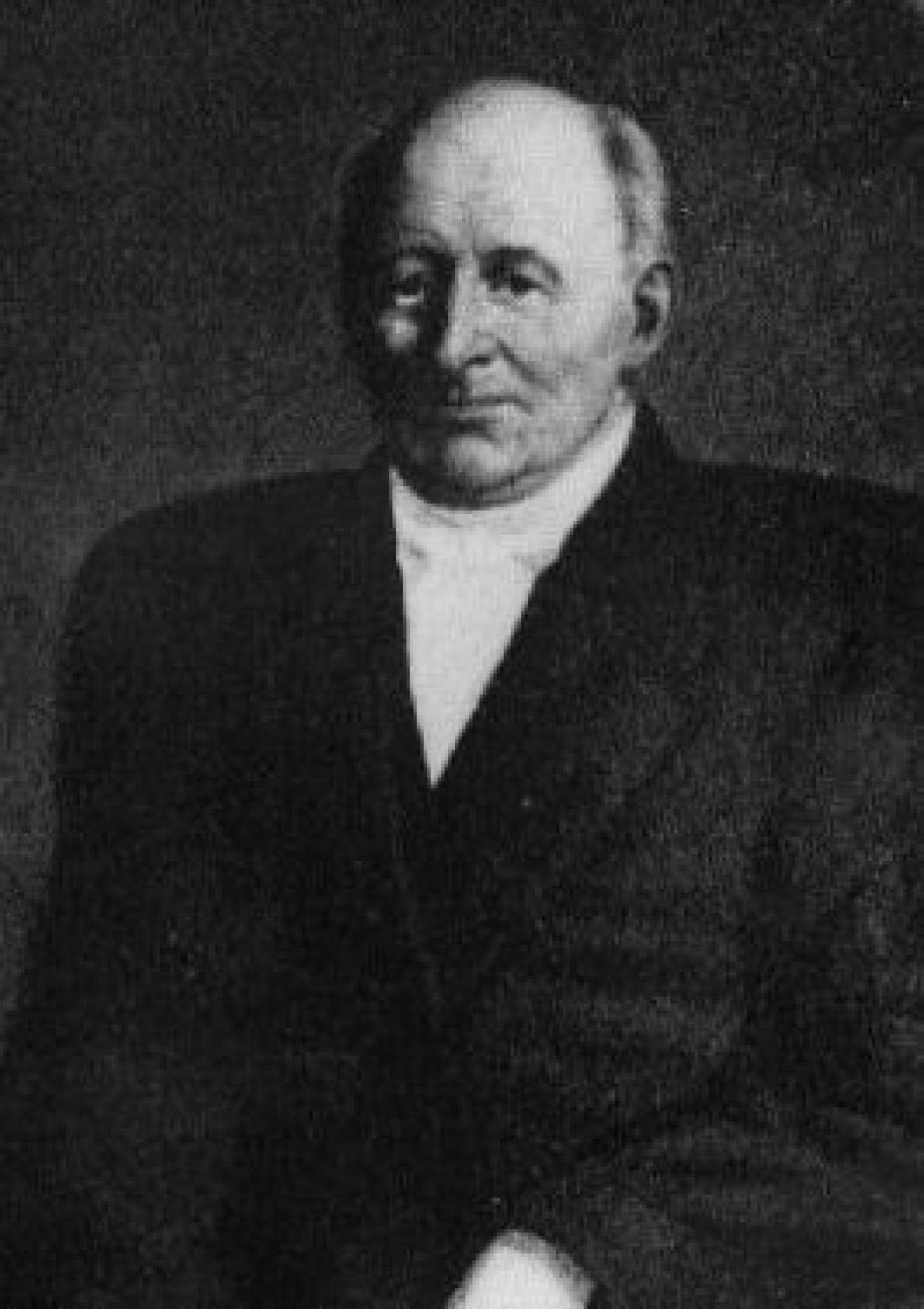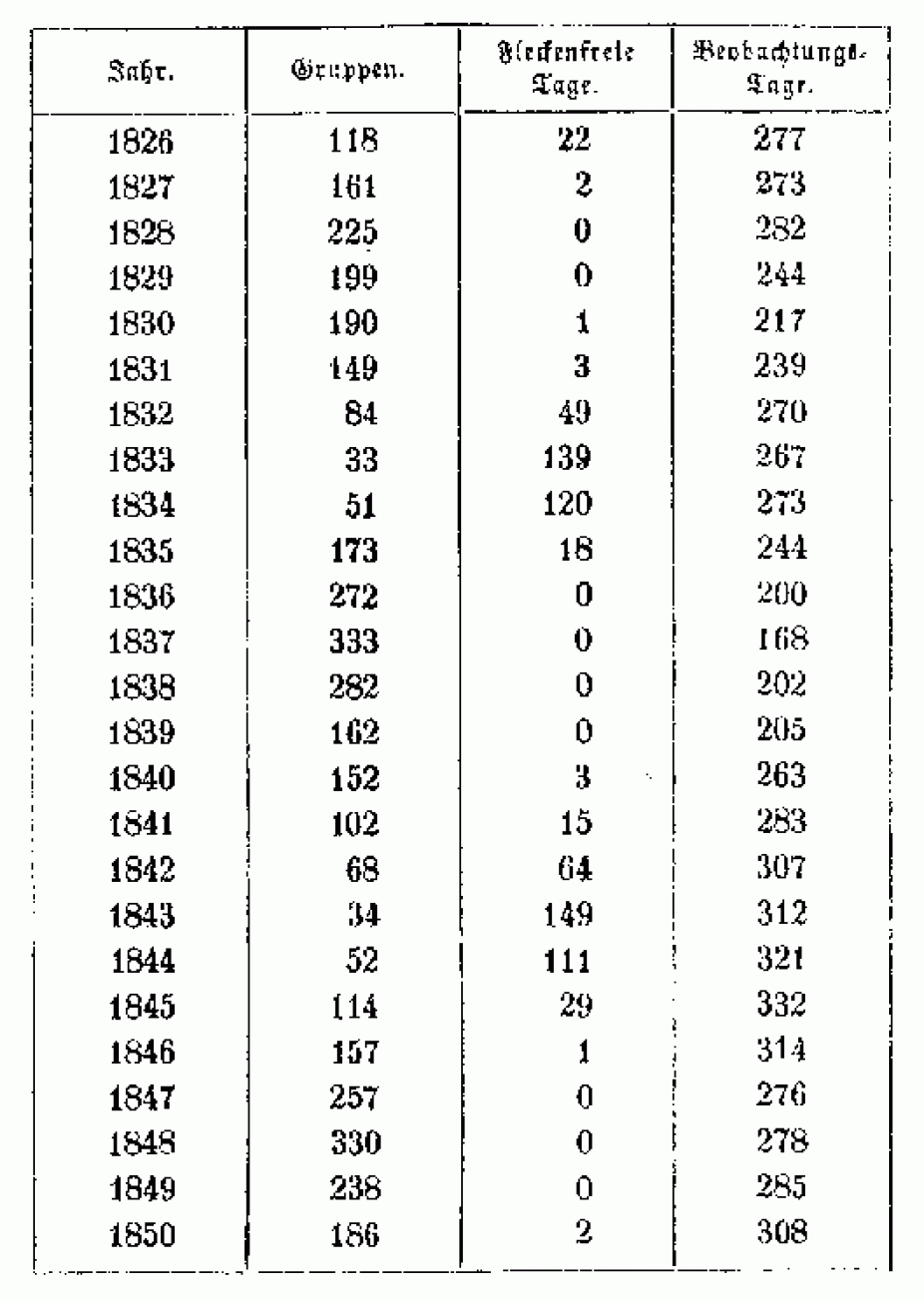Samuel Heinrich Schwabe (1789–1875)

Drawing of S. Heinrich Schwabe.
Wikipedia
Samuel Heinrich Schwabe was born on October 25, 1789 in Dessau, near Berlin. He began pharmaceutical studies in Berlin, in the course of which he became interested in astronomy and botany. He returned to Dessau in 1812 to take over his family's pharmacy, while pursuing astronomical and botanical researches as an amateur. His first telescope was won at a lottery in 1825, but the following year he ordered a more powerful one through Joseph Fraunhofer. Becoming increasingly absorbed in his astronomical studies, he sold the family business in 1829.
Schwabe's observational work was aimed originally at discovering possible planets inside the orbit of Mercury. Starting on October 11, 1825, he observed the Sun virtually every day that the weather allowed and did so continuously for 42 years. He accumulated volumes of sunspot drawings, with the aim of detecting his hypothetical planet as it passed across the solar disk while avoiding confusion with small sunspots. In 1843 Schwabe still had not discovered any new planets, but instead, his 17 years of nearly continuous sunspot observations revealed a 10-year periodicity in the number of sunspots visible on the solar disk. That same year Schwabe published this interesting result in the Journal Astronomische Nachrichten, but it attracted little attention until 1851 when his sunspot data was included by Alexander von Humboldt (1769–1859) in volume III of his monumental “Kosmos.”

Table of Schwabe's sunspot observations for years 1826–1850 (column 1), the total number of sunspots groups observed on that year (column 2), the number of days without sunspots (column 3), and the number of days for which the Sun was observed (column 4).
Curiously, Schwabe's astronomical research initially won him greater recognition in England than in Germany. In February 1857 he was awarded the Gold Medal of the Royal Astronomical Society, and in 1868 he was elected to the Royal Society. While Schwabe's fame as an astronomer rests chiefly on his discovery of the sunspot cycle, he is also credited with the first description and drawing, in 1831, of Jupiter's great red spot.
Schwabe died in Dessau on April 11 , 1875.
Bibliography
Schwabe, S.H. 1843, Astronomische Nachrichten, 20, no. 495, 234-235.
Erfurth, H. 1989, in Samuel Heinrich Schwabe: Apotheker, Astronom, Botaniker, Dessau: Museum fur Naturkunde und Vorgeschichte.
von Humboldt, A. 1850, Kosmos. Entwurf einer physischen Weltbeschreibung, Stuttgart [199X reprint of english trans., XXX].